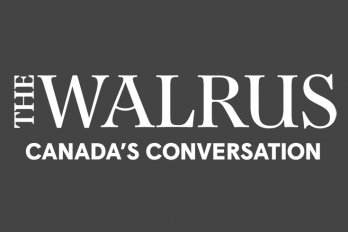On Thursday, October 26, 1995, four days before Quebec voters headed to the polls to vote on the referendum question, the Dom Perignon was flowing at a crowded table in a Toronto steakhouse. It was the kind of flamboyance that initially drew Brian D’Costa, a thirty-one-year-old junior trader at a Toronto subsidiary of a large American bank, into the business. But on that night he was barely able to touch the champagne and oysters. If the Yes side won the referendum, D’Costa would lose the bank as much as $60 million. Recent polls had shown the Yes side with a slight lead. If there was any consolation to be had, it was the grim faces of his dinner companions from other brokerages, which indicated that he was not alone in his plight. How had such a great opportunity to make money turned so sour?
The dinner had been organized two months earlier to toast the bounty that the referendum would bring to Bay Street. The referendum was a particularly good type of crisis, the kind you rarely see as a trader. You could circle it on your calendar, and its Yes-or-No binary outcome offered the most straightforward bet imaginable: No, Quebec wouldn’t separate, in which case you invested heavily in Canadian currency so when the exchange rate rose after the referendum you reaped a windfall; or Yes, Quebec was gone, in which case you banked on the dollar’s crash. Uncertainty over the outcome led Canadian bonds to be sold at wildly varied interest rates, offering speculators the kind of spread not usually found in stable democracies. It hadn’t gone unnoticed that those who had played the bond-trading game during Quebec’s provincial election a year earlier had reaped returns as high as 45 percent. A party a few days before the referendum seemed entirely logical.
Speculating on the movements of currency and its counterparts—bonds and interest rates—has earned a dirty reputation, thanks in part to American financier George Soros, who netted $1 billion (US) in one day in 1992 by betting against the British pound, and almost bringing down the Bank of England in the process. During the lead-up to the referendum, Canada’s financial markets offered the kind of churn that brings speculators flocking. At the beginning of October, newspapers printed the rumour that Soros had sold Japanese yen to buy $300 million in Canadian funds. Speculators are running the market, the Globe and Mail reported, but really the market was turning everyone into a speculator.
Traders faced pressure from their clients to make the most of the peaks and valleys of an agitated dollar, using the currency, bond, and interest-rate markets to make their plays. A one-time Yes-or-No bet on these markets was the simplest route, but there were also more sophisticated strategies on offer in an arcane corner of the financial industry called the derivatives market, which bets on volatility. If, like Brian D’Costa, you knew how to make bets using futures and options, puts and calls, going short and long, you could make a lot of money.
D’Costa’s specialty was selling interest-rate options—essentially insurance against future interest-rate hikes—to buyers worried about a spike, at a steep enough price to make taking on the risk worthwhile. There were institutions out there with what turned out to be rare foresight, and they gave D’Costa brisk business in the months before the referendum. It was an exhilarating time. In the heat of summer he’d bounce to work thinking, “I’m going to have the best year. We’re going to make the most money for the firm that this business has ever made.” There were other, even more ebullient appraisals: “Free money,” one broker put it.
Lucien Bouchard’s appointment as co-leader of the Yes campaign in the second week of October rattled the early complacency. “All of a sudden the chatter in the market switched from ‘Not a big deal’ to ‘What happens if it’s Yes?’” recalls D’Costa.
For weeks, D’Costa had been selling interest-rate options to protect people from a Yes vote; now he suddenly realized he needed protection himself. Everywhere traders were desperately trying to cover themselves. Option prices were doubling by the minute. For Michael Wexler, a twenty-four-year-old Montrealer working on Bay Street, it represented sweet vindication. For months he had been the maverick of the trading floor, arguing that the Yes side stood a good chance of winning. This conviction had fuelled bets like locking in the dollar at $0.73 (US) when he believed it could tumble as low as $0.50. Desperate speculators now grabbed at his currency options at steadily climbing prices. According to Wexler, this panic launched his career. He now owns a hedge fund in London.
D’Costa, on the other hand, was thinking about his career ending. He was running scenarios where interest rates reached 20 percent when he had predicted and sold options at 6 percent. He bought all the insurance he could, at astronomical prices, but he was still exposed. “It had completely switched. It wasn’t about making any money any more; it was just about not losing a bundle. And so I remember I couldn’t sleep at night because I was thinking, ‘Oh my god.’” His position wasn’t unique. Many traders found options either too expensive or unavailable and so went into the referendum “unhedged,” turning it into one of the highest-stakes games Bay Street had ever played.
Global ignorance of Canadian politics helped fuel the situation. Canada was synonymous with safety, so banks and brokerages around the world habitually assigned a small percentage of their portfolios to its currency, which they knew nothing about, and to its bonds, which had tantalizingly high interest rates in the run-up to the referendum. Imagine their surprise when they woke up in October and discovered a country less stable than they had thought—one that was the highest per-capita issuer of debt to foreigners in the world and that harboured a malcontent province hinting regularly about defaulting on its debt. Michael Wexler had capitalized on this ignorance by buying currency options—to deliver money at a predetermined rate—from a large Swiss bank willing to sell them for the day of the referendum at a just-another-day rate. He then resold them for a profit.
Foreign ignorance is predictable, but what of domestic ignorance? “For the Canadians sitting around me, where it’s all we talked about all day for three months, I just couldn’t see why they had their heads in the sand,” Wexler says. He thinks they were making the ultimate speculator’s mistake: basing decisions on emotion. “They didn’t believe the polls [because of] personal biases, emotional biases.” Certainly D’Costa remembers big gusts of angst propelling him through his trades. “I find it easier to be very logical when some event’s happening in Asia. I mean it is affecting the capital markets globally but, personally, you know it doesn’t affect you at all. Whereas with the referendum, you’re like, ‘This also has implications outside of my professional life.’ At that time, all I cared about was, ‘I’ve got a mortgage, what’s going to happen here?’”
With emotional dervishes spinning inside every bank, brokerage house, hedge fund, and trading pit, the market began acting in a way that can only be described as hormonal. One week before the referendum, the stock market and Canadian dollar plunged in a way that suggested reality had finally sunk in. The next day, unaccountably, absurdly, with polls putting the Yes side as much as 2 percent ahead, the dollar started climbing again. On Friday, October 27, the day after Brian sat sipping champagne with a $60-million albatross around his neck, the heads of the treasury desks at Canada’s six big banks made a historic decision. They agreed to close the $30-billion-a-day domestic foreign-exchange market, effectively bringing trading on the Canadian dollar to a halt until the referendum. “It was unprecedented, a truly remarkable move that to my knowledge had not been taken before,” says financial analyst Andrew Pyle. For a short interlude, there would be respite from a market whose volatility, with no logic and no trend, could become a siren song.
The following Monday, on the day of the referendum, traders who had placed their bets before the market shut down would have no choice but to be in the trenches, with a 50-percent chance of defeat. The general consensus today is that if the Yes side had triumphed, there would have been a staggering selloff of Canadian currency and bonds, as speculators who had positioned themselves for a No tried to divest their holdings. This would then have triggered a more general stampede.
On the night of the referendum, agitated and wondering what new career he might pursue, Brian D’Costa had only one strategy in mind in the event of a Yes win. “There’s millions and millions and millions of dollars worth of bonds I have to sell, and I ‘m trying to sell while a lot of other people [are] thinking the same thing.”
The prospect of a fire sale on the Canadian dollar had placed the federal department of finance in a delicate position in the run-up to the referendum. Sixty-five percent of Canada’s massive debts were due within a year, and the country was financing $9 billion in debt each week. A high-level official in the department now admits that he and his colleagues feared the country would be bankrupt by Christmas. No one would want to lend Canada money or buy Canadian bonds, least of all the once generous speculators who would by then have moved on to place their bets elsewhere. But the government could not be seen preparing for speculative flight by stockpiling currency. It would look bad politically and might scare off bond purchasers.
The finance department was particularly frustrated because it had learned that Quebec Premier Jacques Parizeau and his team were carefully and secretively planning for just such a crisis. Under his now-notorious Plan O (for obligation, French for “bond”), in the event of a Yes vote and subsequent speculative flight, Parizeau would tap into a $17-billion pool, much of it pension funds controlled by the Caisse de dépôt et placement du Québec. “Il y en a qui profitent de la peur de certains,” he warned. If frightened speculators sold off Quebec bonds, his government would buy them up, cheap and in large enough quantities to restore investor confidence, and make a profit at the same time.
On October 30, the ups and downs of the previous weeks were compressed into two short hours as the votes were counted. In the end, traders like Brian D’Costa got the outcome they had bet on, but it is doubtful that this translated into take-home bonuses. “It would have been pretty hard to make money on a No,” says Ted Carmichael, chief economist at J.P. Morgan. The dollar’s roller-coaster ride would have made it difficult for most traders to break even. Rumours about referendum losses still abound—“bucketloads,” as one trader suggested. No one is telling, except for D’Costa, who thinks he lost $3 million, “the most money I’ve lost in one day and I still felt good about it.”
The next day, he went to work and discovered that none of his colleagues wanted to talk about the harrowing experience they had just been through. It was a surreal moment. But he quickly realized that he too was ready to get back to business as usual. “It didn’t take long,” he says, “to go from fear right back into greed.”




